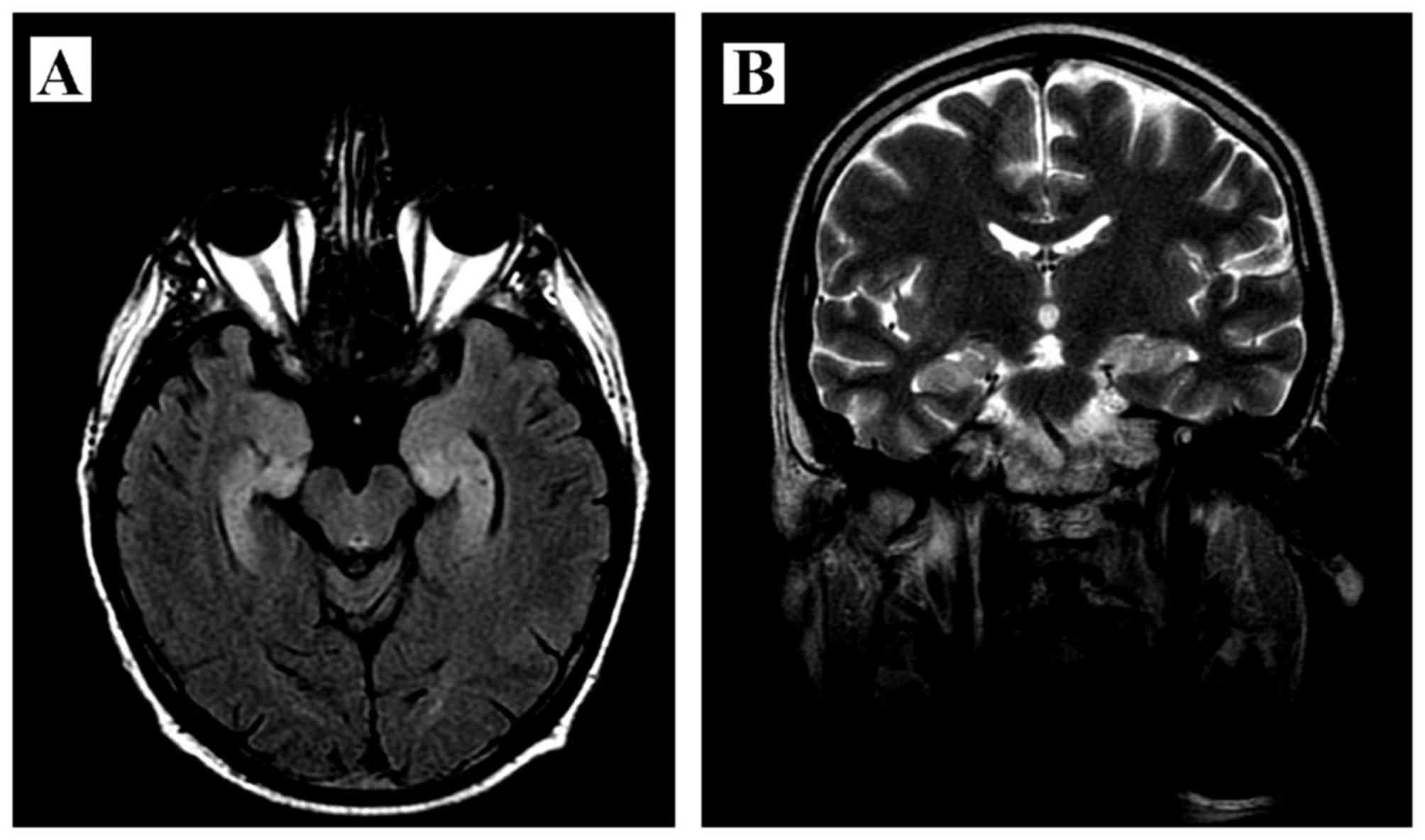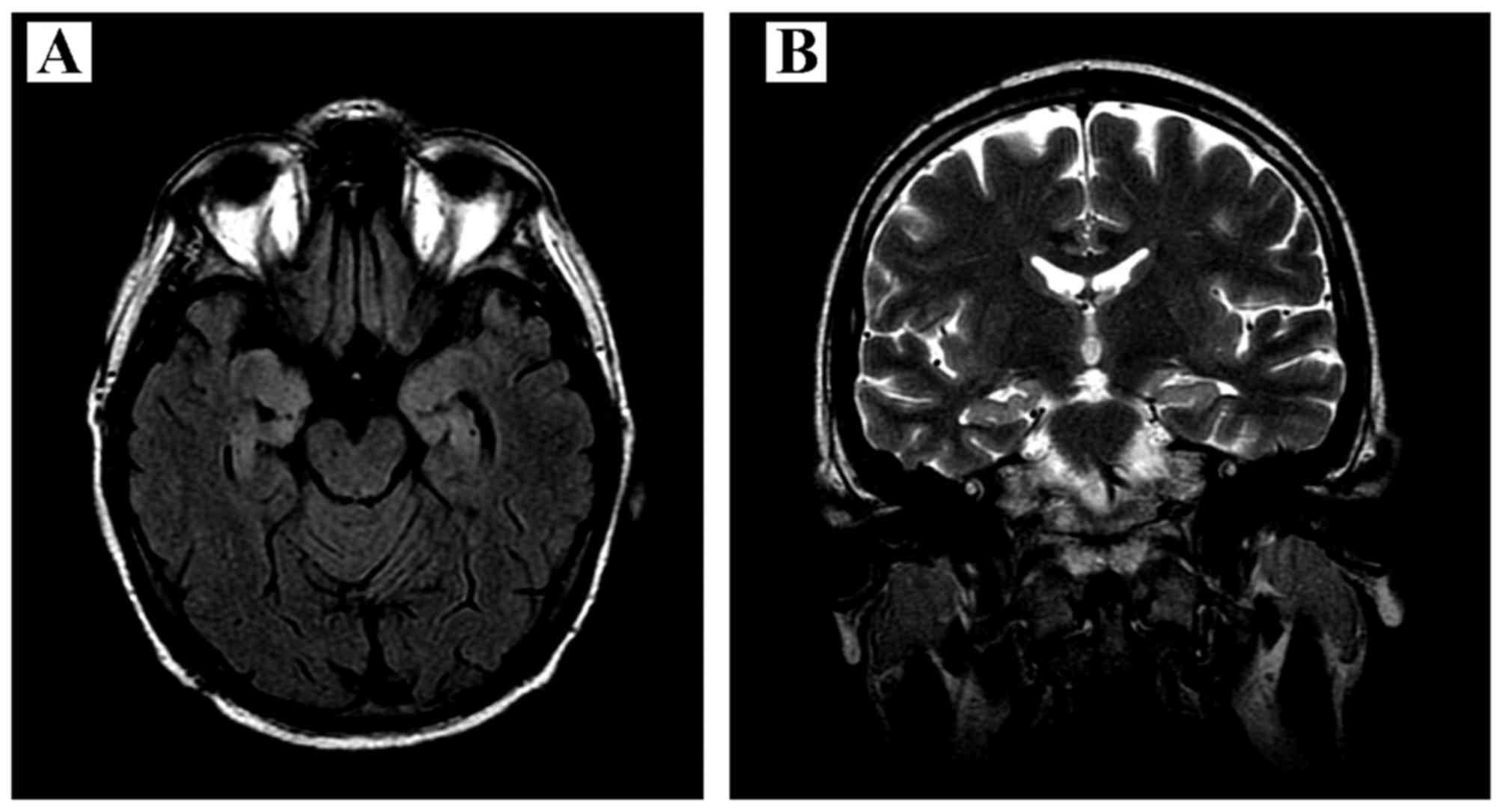Paraneoplastic limbic encephalitis in a patient with extensive disease small‑cell lung cancer
- Authors:
- Published online on: February 10, 2017 https://doi.org/10.3892/mco.2017.1162
- Pages: 575-578
Metrics:
Total
Views: 0 (Spandidos Publications: | PMC Statistics:
)
Total PDF Downloads: 0 (Spandidos Publications: | PMC Statistics:
)
Abstract
Paraneoplastic limbic encephalitis (PLE) is a rare disorder infrequently accompanying malignancy, coexisting in ~50% of the cases with small‑cell lung cancer (SCLC). The pathomechanism of PLE is considered to be immune‑mediated, with production of specific anti‑Hu antibodies and activation of T‑cells directed against onconeural antigens present on both tumor cells and neurons. We herein report the case of a 50‑year‑old male patient who, prior to being diagnosed with SCLC, presented with typical symptoms of PLE (seizures, subacute cognitive dysfunction with severe memory impairment, anxiety and hallucinations). The initial brain magnetic resonance imaging examination revealed mild enlargement and hyperintensity of the hippocampal gyri bilaterally, with narrowed temporal horns of the lateral ventricles; the findings of the cerebrospinal fluid examination were compatible with the diagnosis of lymphocytic meningitis. Due to the suspected infectious origin of the disease, treatment with acyclovir and antibiotics was initially applied. However, following subsequent diagnosis of the underlying SCLC and the presence of antineuronal anti‑Hu antibodies in the patient's serum, the diagnosis of PLE accompanying extensive‑disease (ED) SCLC was confirmed. In addition to the standard cytotoxic therapy, throughout the course of his disease the patient also continued treatment with valproic acid (VPA) as prophylaxis for the initial seizures. VPA is known to be a potent histone deacetylase inhibitor that may reverse epigenetic changes in tumor cells and potentially improve the outcome of cancer patients. The patient succumbed to the disease 25 months after the diagnosis of malignancy; such a long course is observed in only ~5% of patients with ED SCLC. Therefore, it was hypothesized that the accompanying paraneoplasia and treatment with VPA may have improved the outcome in this patient.












